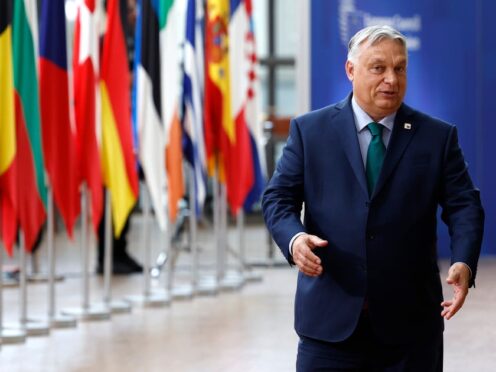
Hungarian Prime Minister Viktor Orban has presented a new alliance with Austria’s far-right Freedom Party and the main Czech opposition party, which hopes to attract other partners and become the biggest right-wing group in the European Parliament.
Mr Orban travelled to Vienna to present the Patriots for Europe alliance of his Fidesz party with the Freedom Party and former Czech prime minister Andrej Babis’s Ano party, a day before Hungary takes over the European Union’s rotating presidency for six months.
The European Parliament elections in early June strengthened hard-right parties overall, though their performances varied from country to country, but left unclear to what extent they would manage to work together.
Until now, they have been spread across two groups in the EU legislature, plus a large number of unaligned parties.

In recent years Mr Orban has appeared to relish opportunities to block, water down or delay key EU decisions, routinely going against the grain of most other leaders on issues like the war in Ukraine, relations with Russia and China, and efforts to defend democracy and the rule of law.
His public opposition to EU policies and stances has long frustrated other governments in the bloc and pushed him to the margins of the continent’s mainstream.
“What Europeans want is three things: peace, order and development,” Mr Orba said through an interpreter at Sunday’s event. “And what they are getting from the elite in Brussels today is war, migration and stagnation.”
“Our objective is… and we believe that this will happen, that in a short time this will be the strongest right-wing group in the European Parliament,” he added.
The trio would need to attract politicians from at least four more EU countries to successfully form a group in the new parliament.

Freedom Party leader Herbert Kickl noted that the new European Parliament will meet for the first time in Strasbourg on July 16.
He said that “starting immediately … all political forces that want to join in our political and positive reform effort are very welcome”.
Mr Kickl added that “from what I have heard in recent days … there will be more of them than some of you probably suspect right now”.
He did not name any potential partners, and the three party leaders did not take questions.
The Freedom Party narrowly won first place in the European Parliament election and hopes to win Austria’s national election on September 29.
A “patriotic manifesto for a European future” signed by the three party leaders attacks alleged plans for “a European central state” and pledges “to prioritise sovereignty over federalism, freedom over diktats, and peace”.

Enjoy the convenience of having The Sunday Post delivered as a digital ePaper straight to your smartphone, tablet or computer.
Subscribe for only £5.49 a month and enjoy all the benefits of the printed paper as a digital replica.
Subscribe